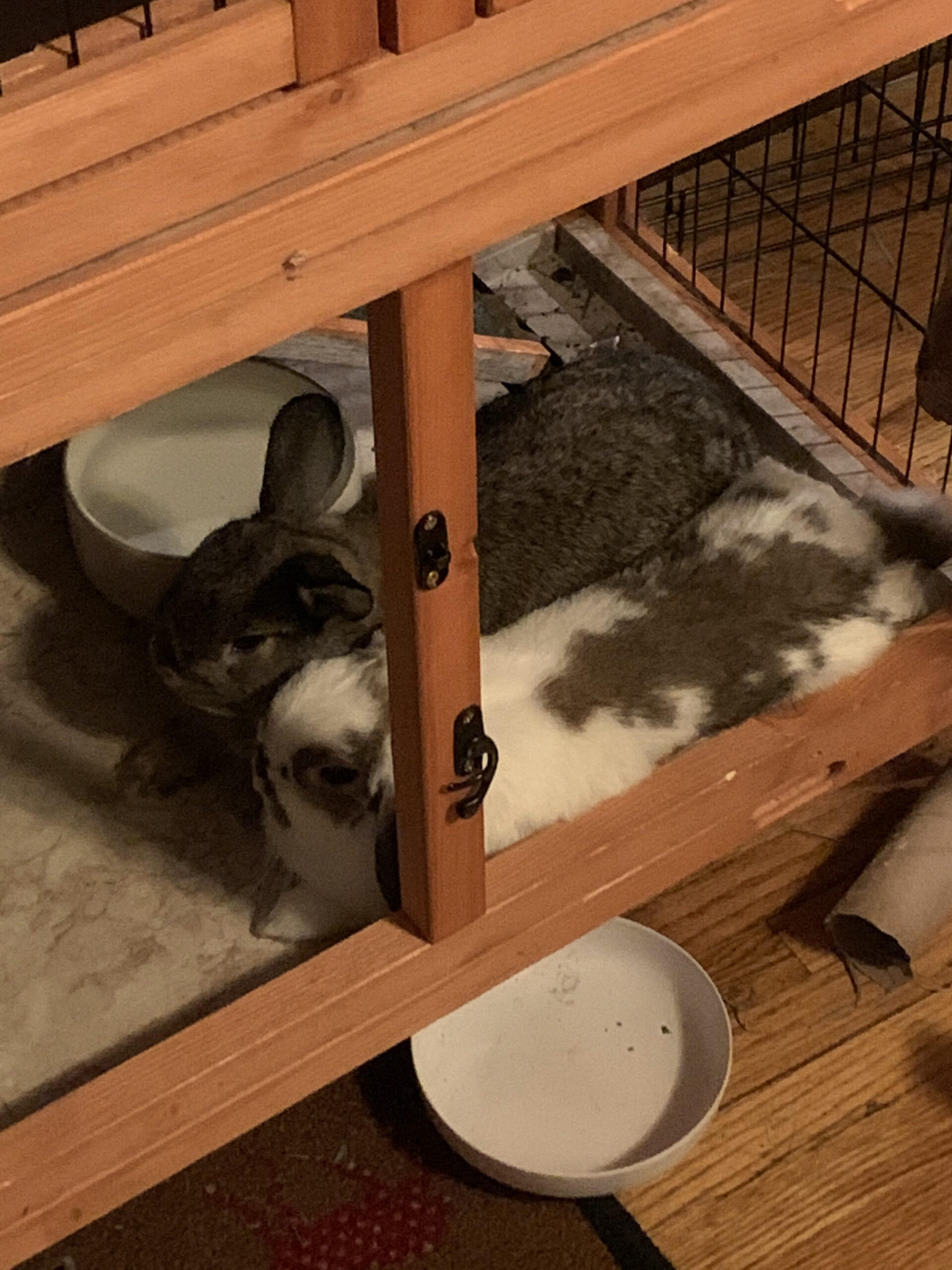Why is My Female Rabbit Peeing Everywhere?
Female rabbits, also known as does, are generally clean animals that are naturally inclined to use a specific area for urination. However, there are instances when a female rabbit may start peeing everywhere, causing frustration and confusion for their owners. This behavior can be attributed to several factors, including hormonal changes, stress, illness, or lack of litter training. This article will explore the possible reasons behind a female rabbit’s sudden change in urination habits and provide useful tips to address this issue.

Hormonal Changes
Female rabbits have a reproductive cycle that involves periodic hormonal changes. During the breeding season or when they are in heat, rabbits may exhibit increased territorial behavior, including urinating outside of their designated area. This behavior aims to attract potential mates and establish dominance. If your female rabbit is not spayed, these hormonal fluctuations can contribute to her peeing everywhere.
Stress and Anxiety
Rabbits are sensitive creatures that can easily get stressed or anxious. Changes in their environment, such as a new home, rearranged furniture, loud noises, or the presence of unfamiliar animals, can trigger stress responses. Stress can lead to behavioral changes, including improper urination. Female rabbits may start peeing everywhere as a way to mark their territory or relieve their anxiety.
Urinary Tract Infection
A urinary tract infection (UTI) can cause a rabbit to urinate more frequently and in inappropriate places. UTIs can be painful and make it difficult for the rabbit to control their bladder. If you notice your female rabbit peeing everywhere accompanied by signs of discomfort, such as straining or blood in the urine, it is crucial to consult a veterinarian for a proper diagnosis and treatment.
Litter Box Issues
In some cases, a female rabbit may start peeing everywhere due to a lack of litter box training or a dislike for their current litter box setup. Rabbits are generally clean animals and prefer to use a specific area for eliminating waste. However, if the litter box is dirty, too small, or made of an uncomfortable material, the rabbit may choose to relieve themselves elsewhere. Additionally, if there are multiple rabbits in the same living space and limited litter boxes, they may compete for the same spot, leading to accidents outside the designated area.
Tips to Address the Issue
Dealing with a female rabbit peeing everywhere can be challenging, but there are steps you can take to address the issue:
- Spaying: Consider having your female rabbit spayed by a qualified veterinarian. Spaying can help regulate hormone levels, reducing territorial and marking behaviors.
- Cleanliness: Ensure that the litter box is cleaned regularly. Rabbits are more likely to use a clean and pleasant-smelling area for urination. Avoid using harsh chemicals or strong scents when cleaning, as rabbits are sensitive to odors.
- Litter box setup: Provide a comfortable and appropriately sized litter box for your rabbit. Use a litter material that is safe for rabbits, such as paper-based bedding or hay. Place the litter box in a quiet and easily accessible area.
- Stress reduction: Minimize stressors in your rabbit’s environment by keeping their living space calm and quiet. Provide hiding spots and toys to keep them mentally stimulated. Avoid sudden changes or introducing new animals without proper introductions.
- Training and reinforcement: Reinforce litter box training by rewarding your rabbit with treats or affection whenever they use the designated area. Use positive reinforcement techniques and be patient during the training process.
Remember, every rabbit is unique, and it may take time to find the right solution for your rabbit’s urination problem. Consulting a veterinarian who specializes in rabbit care can provide additional guidance and support.
Frequently Asked Questions (FAQs)
1. Can spaying my female rabbit stop her from peeing everywhere?
Spaying your female rabbit can help regulate hormone levels and reduce territorial behaviors like urinating outside of the designated area. However, it may not eliminate the issue entirely, especially if other factors like stress or litter box problems are also contributing. It is essential to address all potential causes and provide a suitable environment for your rabbit.
2. How can I tell if my female rabbit has a urinary tract infection?
Signs of a urinary tract infection in rabbits include increased frequency of urination, straining to urinate, blood in the urine, and signs of discomfort or pain. If you suspect your rabbit has a urinary tract infection, it is crucial to seek veterinary attention promptly for proper diagnosis and treatment.
3. What litter material is best for a rabbit’s litter box?
Safe litter materials for rabbits include paper-based bedding, aspen shavings, or pelleted bedding made from compressed paper or wood. Avoid using clumping cat litter, which can be harmful if ingested. Rabbits also enjoy having a layer of hay on top of the litter, as it mimics their natural instincts.
4. How long does it usually take to litter train a female rabbit?
Litter training a rabbit can take time and patience. Some rabbits may pick up litter training quickly, while others may require more time and reinforcement. It is essential to remain consistent, reward your rabbit for using the litter box, and be understanding of any accidents that may occur during the training process. Seek advice from a rabbit-savvy veterinarian or experienced rabbit owner if you encounter difficulties.
Related Articles…
Copyright Notice:
Images displayed on this website are not our property, but are procured from the internet. If you hold copyrights to any image and wish for its removal, please get in touch with us.